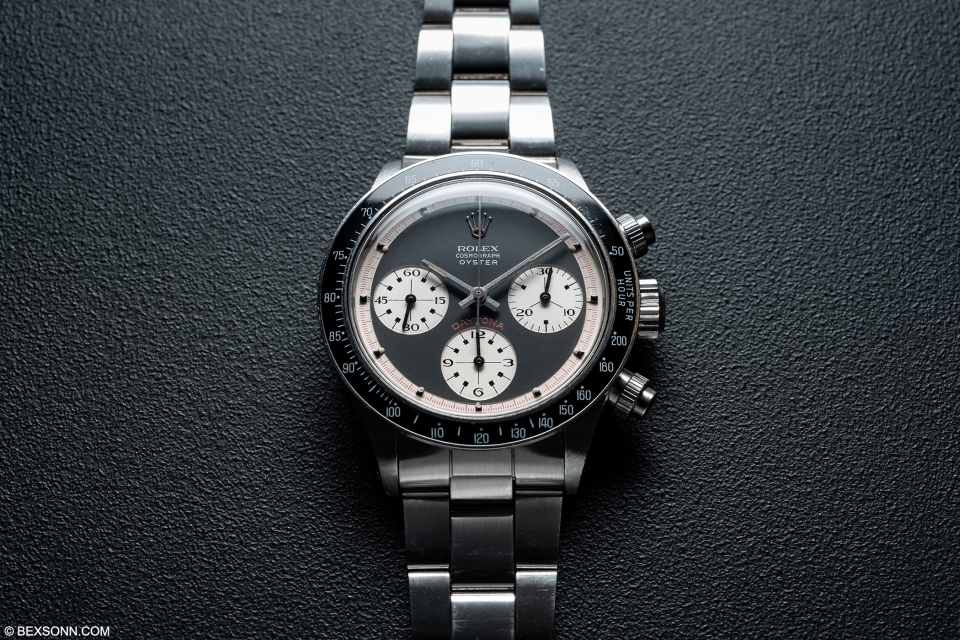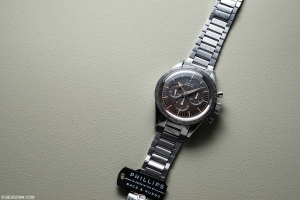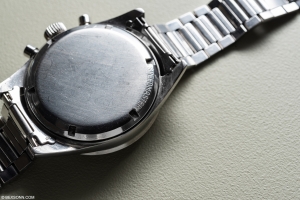Now that the dust has somewhat settled after the Phillips Daytona Ultimatum & Geneva Watch Auction: Seven, in typical fashion, we thought it would only right to observe how the lots we highlighted performed. By now we are all familiar with records being set and surpassed every time we attend any of Phillips watch auctions, of course this weekend was no different. While there were a few minor changes, with regard to personnel the stage was set for perhaps the most anticipated auction of the past weekend. It was a full room indeed, with only 400 chairs available to the 500+ strong crowd. Ordinarily, whatever the outcome of the Daytona Ultimate auction was, we were sure there’d be other lots that would see some fierce battling done in the room, on the phones and online.
DAYTONA ULTIMATUM
The Daytona Ultimatum auction was arguably the most anticipated auction this weekend, with many of the worlds most renowned scholars & collectors in attendance to perhaps catch a glimpse of the action and maybe one or two records being made or broken. When Aurel took to the rostrum the room was completely packed and even those without a seat were happy to stand for the next 2 and a half hours of bidding and just to add to this, let’s just say the temperature inside the tent was closer to that of a sauna.
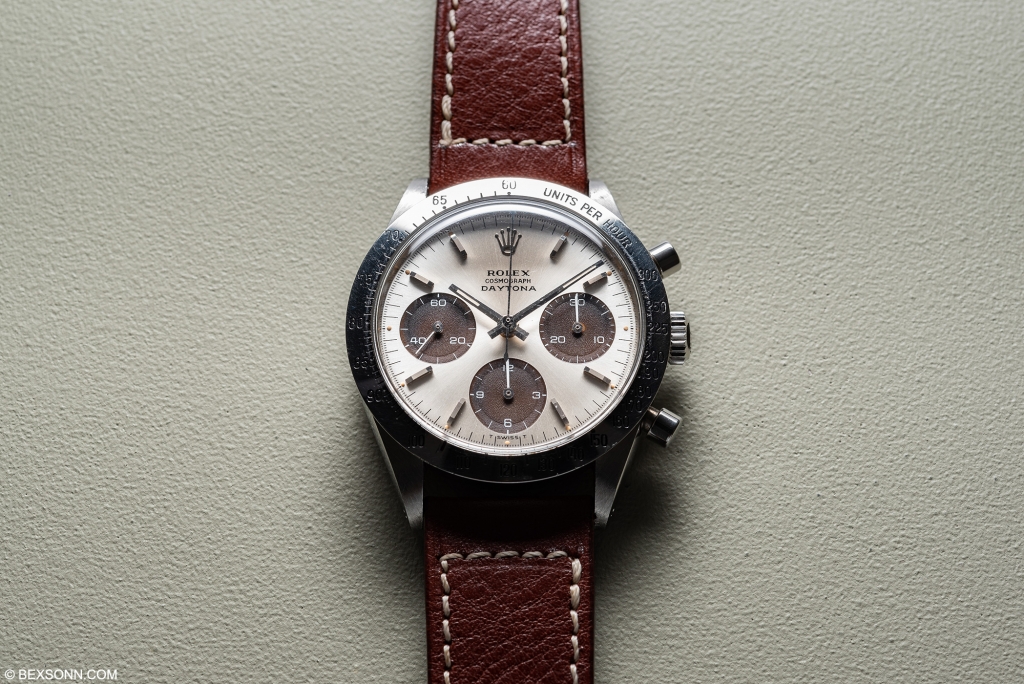 One of the first lots to go under the hammer from the Daytona auction that we highlighted was lot 5: a reference 6239 nicknamed Mr. Brown. This early example featured seldom seen tropical subsidiary dials. The sub dials had aged in such an uniformed way, from their standard black form to a warm chocolate tone that offered a lovely contrast to the silver dial, lending to the nickname. Moreover, earlier reference 6239s featured a small Daytona script below “Rolex Cosmograph”, however, Rolex also introduced a different dial layout which displayed a slightly larger “Daytona” font below the “Cosmograph” inscription – such as this example. When the gavel fell on this example it sold for a rather modest 106,250 Swiss Francs.
One of the first lots to go under the hammer from the Daytona auction that we highlighted was lot 5: a reference 6239 nicknamed Mr. Brown. This early example featured seldom seen tropical subsidiary dials. The sub dials had aged in such an uniformed way, from their standard black form to a warm chocolate tone that offered a lovely contrast to the silver dial, lending to the nickname. Moreover, earlier reference 6239s featured a small Daytona script below “Rolex Cosmograph”, however, Rolex also introduced a different dial layout which displayed a slightly larger “Daytona” font below the “Cosmograph” inscription – such as this example. When the gavel fell on this example it sold for a rather modest 106,250 Swiss Francs.
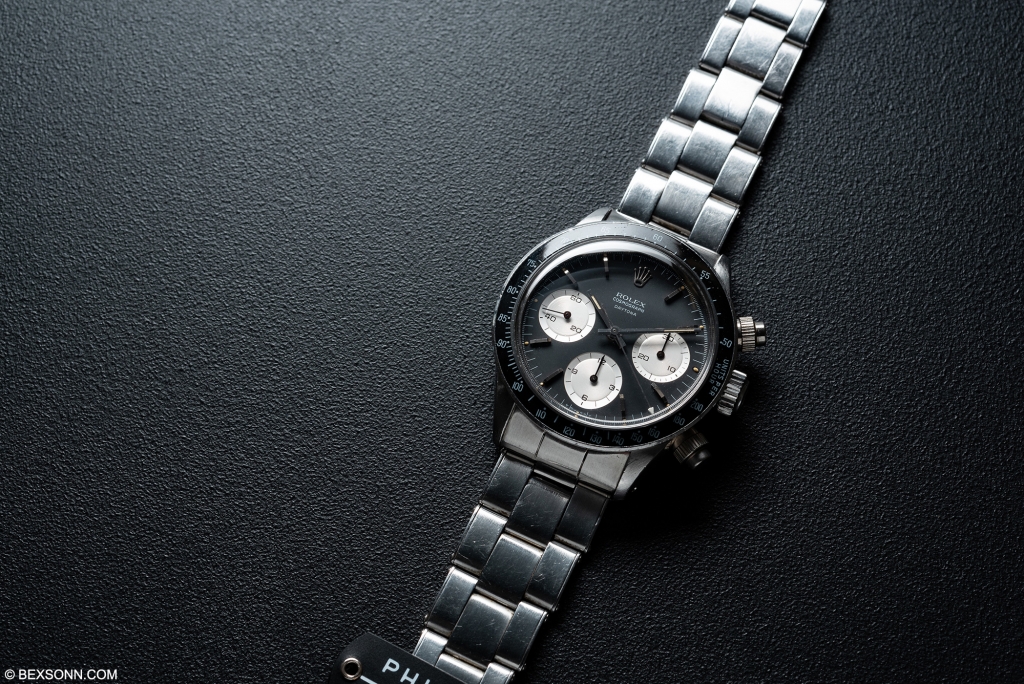 Another example we highlighted was lot number 11: the coveted reference 6240. The Daytona 6240 herald another chapter in the Daytonas long and illustrious history. 1965 marked the screw-down push piece era of the Daytona but more interestingly the 6240 was the only reference of the Daytona to be exclusively manufactured in steel. It also only featured an acrylic bezel with tach-o-metre scale. The 6240 is largely known by scholars as a transitional Daytona and was eventually succeeded by the 6263 and 6265. This one also featured the small ‘DAYTONA’ inscription on the black dial, which had discoloured to a dark grey hue. How much of a difference did all these little details make? Enough, as it went on to sell for CHF 143,750.
Another example we highlighted was lot number 11: the coveted reference 6240. The Daytona 6240 herald another chapter in the Daytonas long and illustrious history. 1965 marked the screw-down push piece era of the Daytona but more interestingly the 6240 was the only reference of the Daytona to be exclusively manufactured in steel. It also only featured an acrylic bezel with tach-o-metre scale. The 6240 is largely known by scholars as a transitional Daytona and was eventually succeeded by the 6263 and 6265. This one also featured the small ‘DAYTONA’ inscription on the black dial, which had discoloured to a dark grey hue. How much of a difference did all these little details make? Enough, as it went on to sell for CHF 143,750.
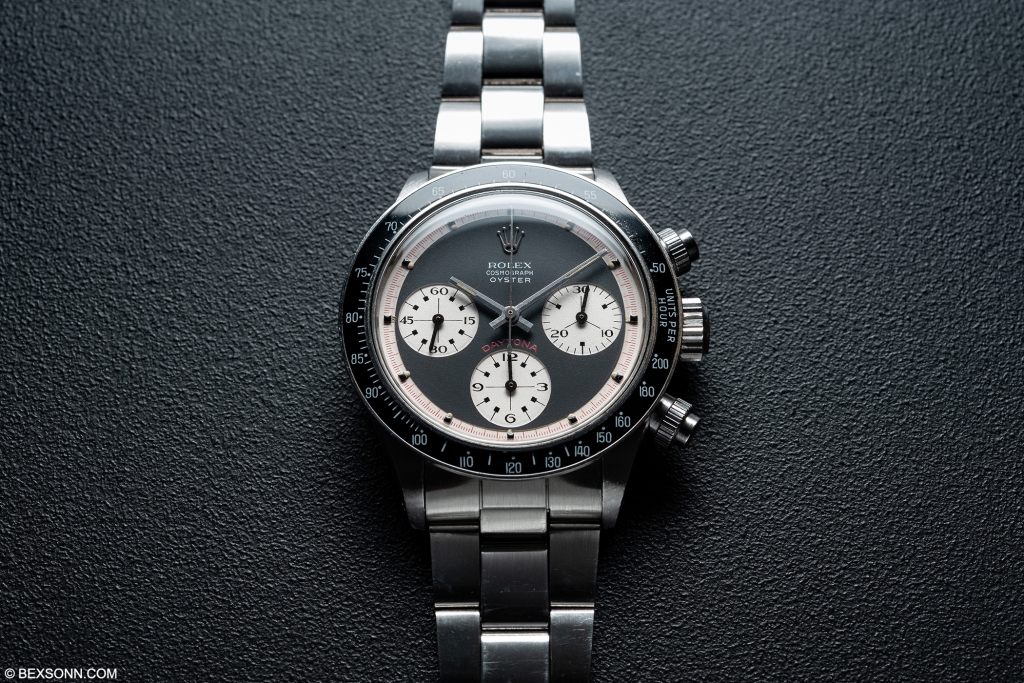 Then there’s the only Paul Newman we highlighted from the auction, lot 14: the 6263 ‘Oyster Sotto’. Without doubt, the most sought-after Daytona of them all has to be the exotic dial Daytona 6263 ‘Oyster Sotto’ Cosmograph, simply because of its rarity. It is believed, by Rolex scholars, that less than 20 examples have ever graced the market. But what makes this ‘Oyster Sotto’ standout even more is its condition and the fact it was offered with its Rolex ‘Garanzia’ dated November 22, 1972 stating the watch was sold in Pelloni, Rome. Again, details that collectors pay attention to because when the gavel came down it sold for CHF 1,662,500.
Then there’s the only Paul Newman we highlighted from the auction, lot 14: the 6263 ‘Oyster Sotto’. Without doubt, the most sought-after Daytona of them all has to be the exotic dial Daytona 6263 ‘Oyster Sotto’ Cosmograph, simply because of its rarity. It is believed, by Rolex scholars, that less than 20 examples have ever graced the market. But what makes this ‘Oyster Sotto’ standout even more is its condition and the fact it was offered with its Rolex ‘Garanzia’ dated November 22, 1972 stating the watch was sold in Pelloni, Rome. Again, details that collectors pay attention to because when the gavel came down it sold for CHF 1,662,500.
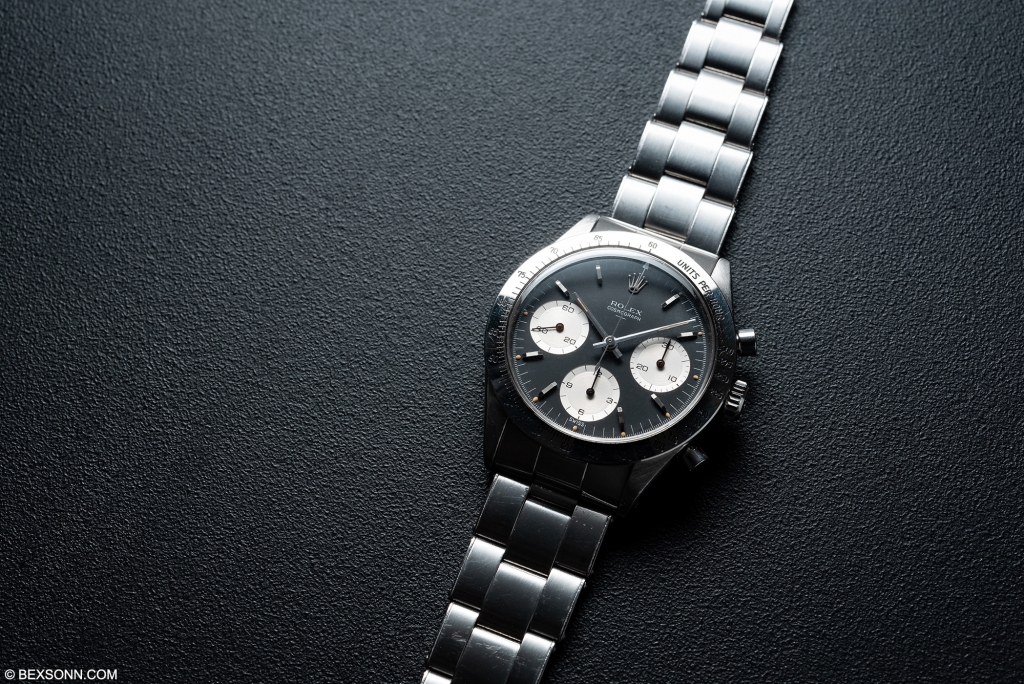 One of my personal favourite examples, was lot 23: the genesis of all Cosmographs – the reference 6239 ‘Underline Double Swiss’. As you’ll know the reference 6239 is the first Daytona ever produced by Rolex, even though the watch had yet to be formally named as such. Introduced in 1963, for a very short period, the iconic chronograph timepiece for the first time featured an external tachymetre scale on its bezel. The ‘double Swiss’ signed dial, is something only seen on very early 6239s and of course the dial is also marked with a short line just below the wording ‘Rolex Cosmograph’ – again, details that collectors admire. And it would appear this sentiment was adhered to as it sold for CHF 275,000.
One of my personal favourite examples, was lot 23: the genesis of all Cosmographs – the reference 6239 ‘Underline Double Swiss’. As you’ll know the reference 6239 is the first Daytona ever produced by Rolex, even though the watch had yet to be formally named as such. Introduced in 1963, for a very short period, the iconic chronograph timepiece for the first time featured an external tachymetre scale on its bezel. The ‘double Swiss’ signed dial, is something only seen on very early 6239s and of course the dial is also marked with a short line just below the wording ‘Rolex Cosmograph’ – again, details that collectors admire. And it would appear this sentiment was adhered to as it sold for CHF 275,000.
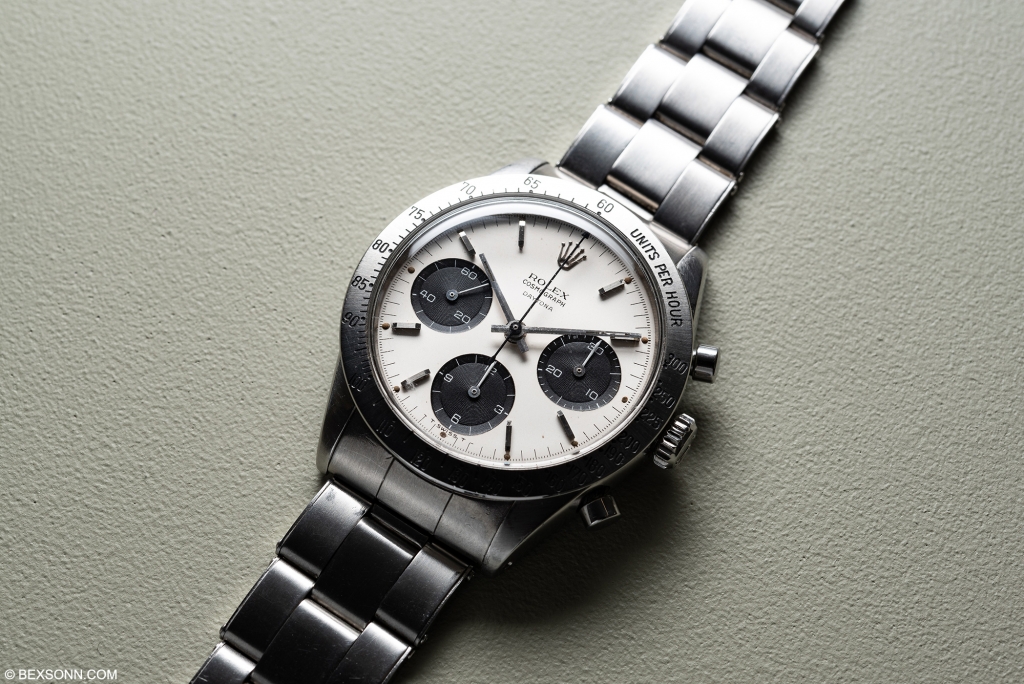 And last but not least from the Daytona auction, was lot 26: a humble ref. 6239 Cosmograph Daytona. While it may have not looked like much, it was one of my personal favourite examples. As you’re already aware by now this reference was first introduced in 1963. This circa 1964 ref. 6239 is one of the first to bear the inscription “Daytona” signature, which appears to float below “Rolex Cosmograph”. It sported what I think is the best dial to have graced the 6239 references; a matte white dial, otherwise known as a grené dial but this example also featured double “–T Swiss T–” print too, adding to the already mentioned sought-after details. These of course, impacting on its sale price: CHF 156,250.
And last but not least from the Daytona auction, was lot 26: a humble ref. 6239 Cosmograph Daytona. While it may have not looked like much, it was one of my personal favourite examples. As you’re already aware by now this reference was first introduced in 1963. This circa 1964 ref. 6239 is one of the first to bear the inscription “Daytona” signature, which appears to float below “Rolex Cosmograph”. It sported what I think is the best dial to have graced the 6239 references; a matte white dial, otherwise known as a grené dial but this example also featured double “–T Swiss T–” print too, adding to the already mentioned sought-after details. These of course, impacting on its sale price: CHF 156,250.
GWA: SEVEN
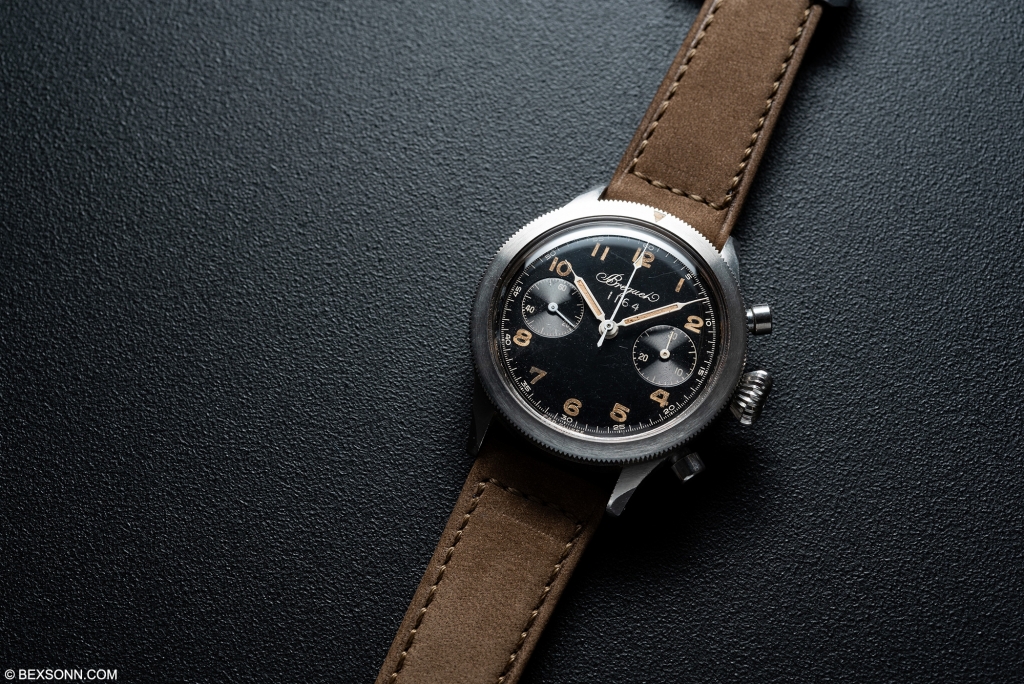 Two of the lots we couldn’t quite get enough of, were lots 119 & 121: two Breguet’s. We’ve always had something of a soft-spot for vintage Breguet and it almost goes without mentioning that at the heart of it all is the Type XX. However, lot 119, strictly speaking, was not actually a Type XX, but instead what can only be described as the Type XX precursor, somewhat of a blueprint for all the future Type XXs that Breguet would produce. It bore many of the characteristic Type XX stylings, with its unique bevelled case and black Arabic numeral dial, but instead it had a glossy dial and a blank, flat bezel. Furthermore, it was accompanied by an extract from Breguet confirming its production year of 1952 and that it was delivered on the 3rd of February 1953. The impact of all these details? When Aurel brought the gavel down it sold for CHF 102,500, dwarfing its higher estimate of CHF 50,000.
Two of the lots we couldn’t quite get enough of, were lots 119 & 121: two Breguet’s. We’ve always had something of a soft-spot for vintage Breguet and it almost goes without mentioning that at the heart of it all is the Type XX. However, lot 119, strictly speaking, was not actually a Type XX, but instead what can only be described as the Type XX precursor, somewhat of a blueprint for all the future Type XXs that Breguet would produce. It bore many of the characteristic Type XX stylings, with its unique bevelled case and black Arabic numeral dial, but instead it had a glossy dial and a blank, flat bezel. Furthermore, it was accompanied by an extract from Breguet confirming its production year of 1952 and that it was delivered on the 3rd of February 1953. The impact of all these details? When Aurel brought the gavel down it sold for CHF 102,500, dwarfing its higher estimate of CHF 50,000.
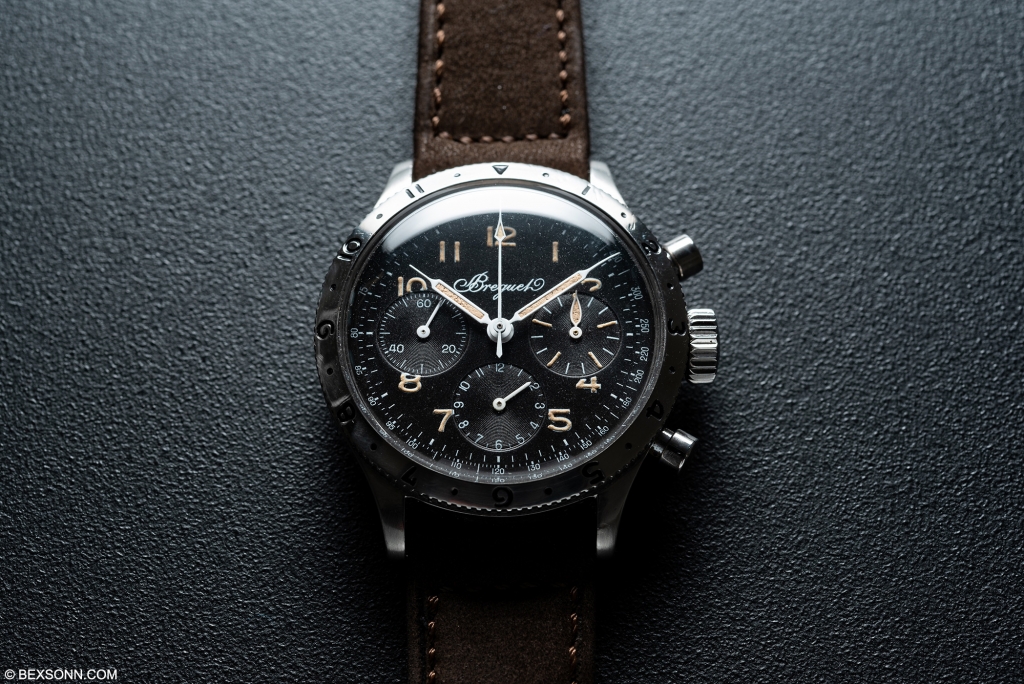 Lot 121, was perhaps as pure as a Type XX gets. A beautiful example in a very well-preserved state and to the uninitiated a typical Type XX but look closer and you’d have seen that this was a very rare variant of the already rare Type XX, with a tachymetre dial. Something seldom seen on Type XXs is scales on the dial and it was revealed by Breguet that at the time, clients could make special order dials for their watches based on what activities they needed it for. This special order Breguet Type XX also sold for a handsome sum: CHF 75,000.
Lot 121, was perhaps as pure as a Type XX gets. A beautiful example in a very well-preserved state and to the uninitiated a typical Type XX but look closer and you’d have seen that this was a very rare variant of the already rare Type XX, with a tachymetre dial. Something seldom seen on Type XXs is scales on the dial and it was revealed by Breguet that at the time, clients could make special order dials for their watches based on what activities they needed it for. This special order Breguet Type XX also sold for a handsome sum: CHF 75,000.
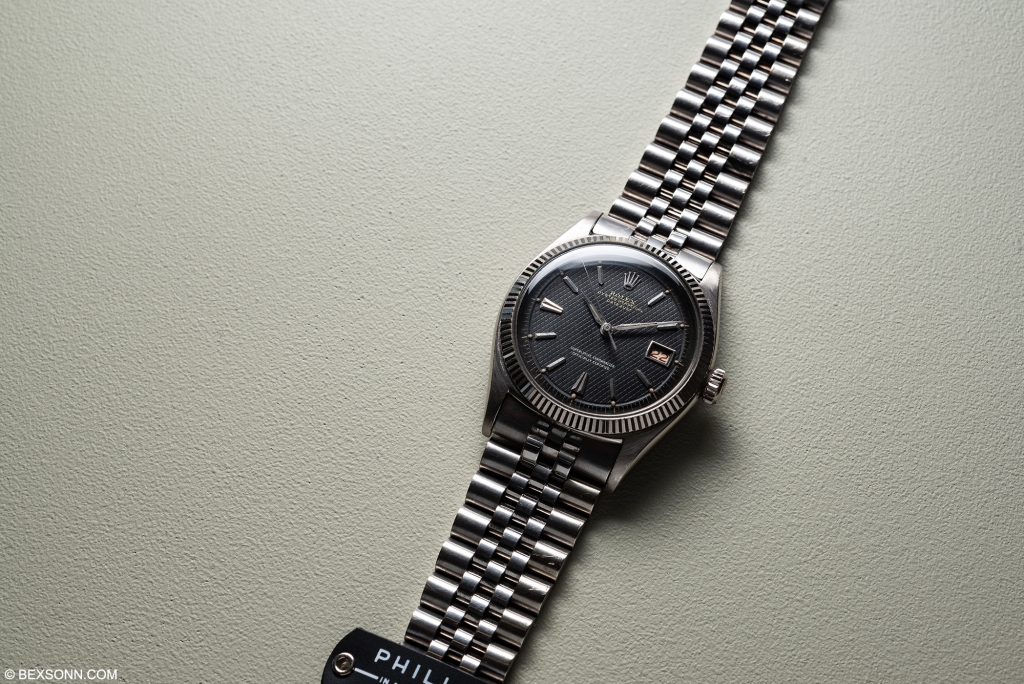 Ah, lot 154: a Rolex Datejust reference 6605, with honeycomb dial – a lot we were very fond of for different reasons. This early reference 6605 was a rare bird indeed. What made this piece the ultimate white gold Datejust though, lies in the dial. It sported the most insane black honeycomb dial and while we’ve seen examples in stainless steel, we’ve never seen it in a white gold case, but both agreed this was the ultimate Datejust to own and the sale price echoed our thoughts too – with a realised price of 87,500 Swiss Francs.
Ah, lot 154: a Rolex Datejust reference 6605, with honeycomb dial – a lot we were very fond of for different reasons. This early reference 6605 was a rare bird indeed. What made this piece the ultimate white gold Datejust though, lies in the dial. It sported the most insane black honeycomb dial and while we’ve seen examples in stainless steel, we’ve never seen it in a white gold case, but both agreed this was the ultimate Datejust to own and the sale price echoed our thoughts too – with a realised price of 87,500 Swiss Francs.
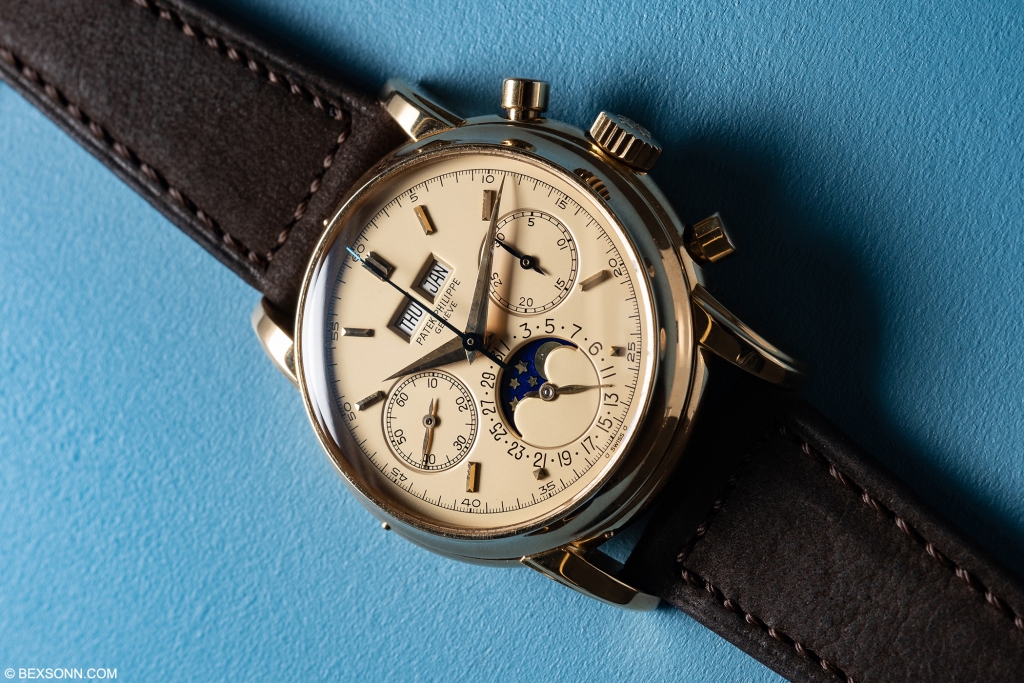 Lot 226: a fresh to market and possibly unique yellow-gold Patek Philippe 2499/100 with champagne dial. This lot was rather interesting to us not only because of its unique traits but also the fact it came with letters of communication between the original owner, retailer and manufacture [Patek Philippe], which not only details this piece was made upon special request but also details the original owners’ irritation of the strap being mounted back to front when received. And while this sounded not only trivial but also mildly amusing, it was this very reason as to why this 2499/100 remained in such impeccable condition. How much did these details and provenance make to the overall sale? Enough, with the lot hammering at 1,572,500 Swiss Francs.
Lot 226: a fresh to market and possibly unique yellow-gold Patek Philippe 2499/100 with champagne dial. This lot was rather interesting to us not only because of its unique traits but also the fact it came with letters of communication between the original owner, retailer and manufacture [Patek Philippe], which not only details this piece was made upon special request but also details the original owners’ irritation of the strap being mounted back to front when received. And while this sounded not only trivial but also mildly amusing, it was this very reason as to why this 2499/100 remained in such impeccable condition. How much did these details and provenance make to the overall sale? Enough, with the lot hammering at 1,572,500 Swiss Francs.
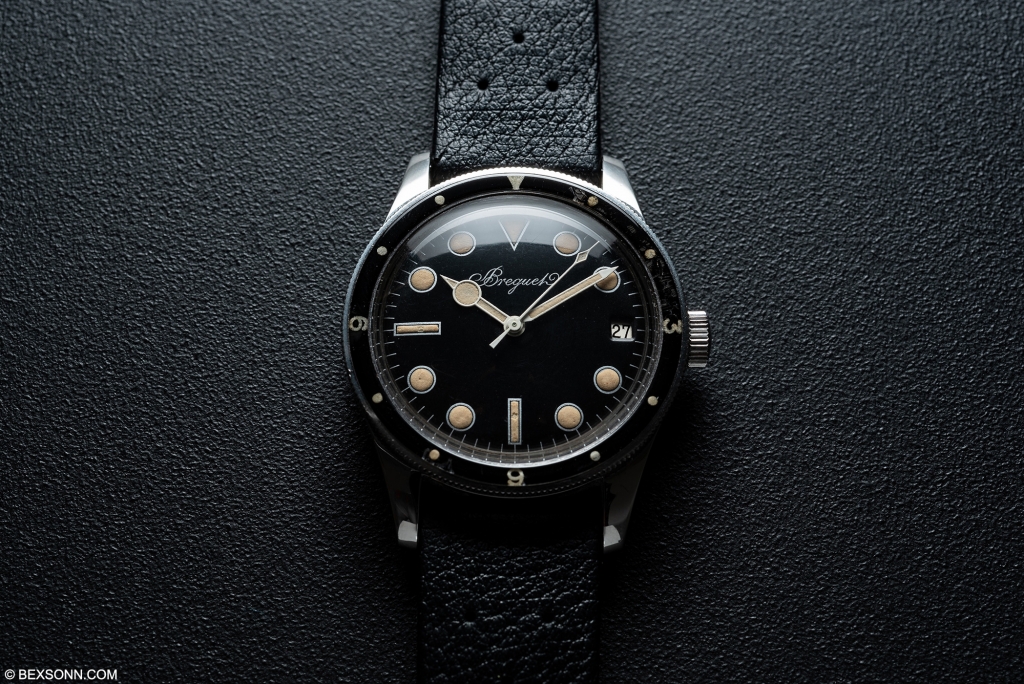 Then there’s this Breguet, which we agreed was perhaps the coolest dive watch in the whole entire Phillips auction. Lot 230, had to have been one of the rarest divers ever produced and it has been confirmed by the Breguet archives that it was produced in 1963 and was sold on the 10th of July 1964. It was also mentioned that less than 60 pieces were ever produced. But putting all of this aside this, in our opinion, had to be one of the most beautiful watches ever designed and it would appear we were not alone. When the hammer finally fell, it sold for CHF 131,250 – a mighty impressive sum.
Then there’s this Breguet, which we agreed was perhaps the coolest dive watch in the whole entire Phillips auction. Lot 230, had to have been one of the rarest divers ever produced and it has been confirmed by the Breguet archives that it was produced in 1963 and was sold on the 10th of July 1964. It was also mentioned that less than 60 pieces were ever produced. But putting all of this aside this, in our opinion, had to be one of the most beautiful watches ever designed and it would appear we were not alone. When the hammer finally fell, it sold for CHF 131,250 – a mighty impressive sum.
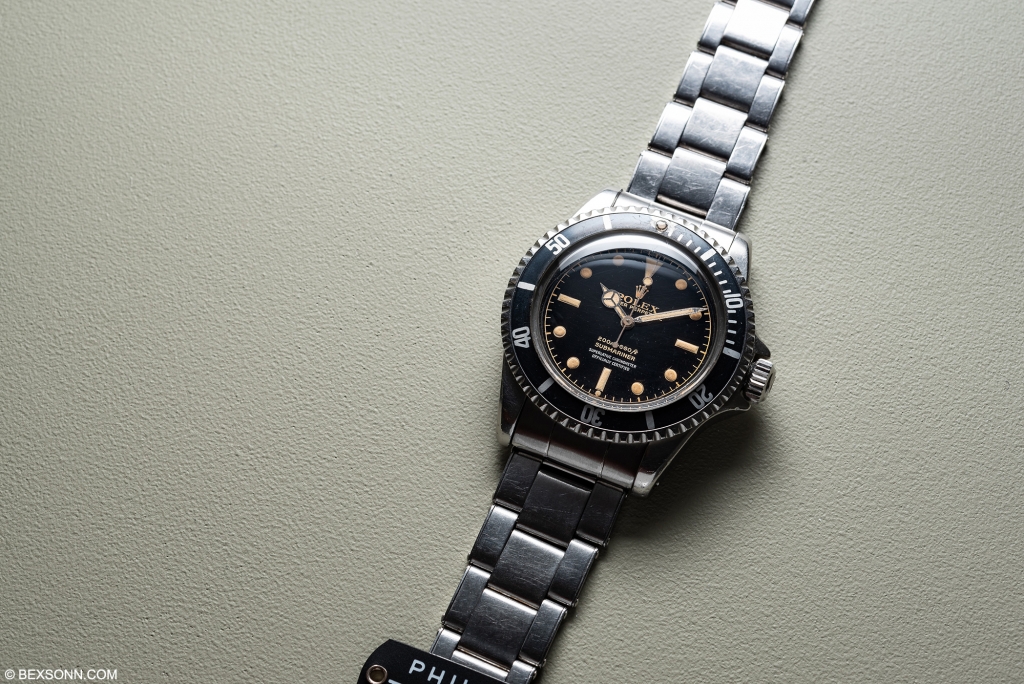 The last of our highlights from GWA7 was lot 252: a Rolex Submariner 5512 with an exclamation. Ordinarily this 5512 wouldn’t be seen as something too dissimilar from what Phillips in Association with Bacs & Russo would’ve sold previously, but the more you analyse the details the more apparent things become as to just what made this example so desirable but of course, there was more. This watch came from the original owner, where he was gifted this watch by his grandmother when he graduated from high school. The caseback was engraved ‘Carlton from Grandma 1963’ and what’s more, he went on to serve two terms in the Vietnam war, where he wore this watch constantly. But the best part of this story, is that it was all documented. The provenance made this lot standout and of course impacted on its hammer price – 95,000 Swiss Francs.
The last of our highlights from GWA7 was lot 252: a Rolex Submariner 5512 with an exclamation. Ordinarily this 5512 wouldn’t be seen as something too dissimilar from what Phillips in Association with Bacs & Russo would’ve sold previously, but the more you analyse the details the more apparent things become as to just what made this example so desirable but of course, there was more. This watch came from the original owner, where he was gifted this watch by his grandmother when he graduated from high school. The caseback was engraved ‘Carlton from Grandma 1963’ and what’s more, he went on to serve two terms in the Vietnam war, where he wore this watch constantly. But the best part of this story, is that it was all documented. The provenance made this lot standout and of course impacted on its hammer price – 95,000 Swiss Francs.
SPECIAL MENTION
Not often can you come away from an auction weekend and mention how strongly Omega performed – those sentiments are usually reserved for the likes of Rolex and Patek Philippe, but I think over the coming years, this is something we’ll start to hear more of. In 2015 Christie’s hosted an all Speedmaster auction – so naturally all eyes were going to be looking to see if a new record would be realized for CK2915-1 and it was, selling for $137,000 – a new world record. However, the lot was withdrawn after the fact due to issues, but this was a sign of things to come. Fast-forward to 2017 and an auction house, unknown for their watch department, in Stockholm, Sweden, officially sets the record for a Speedmaster CK2915-1, with a realised price of $275,500 – making it the most expensive Speedmaster ever sold at auction.
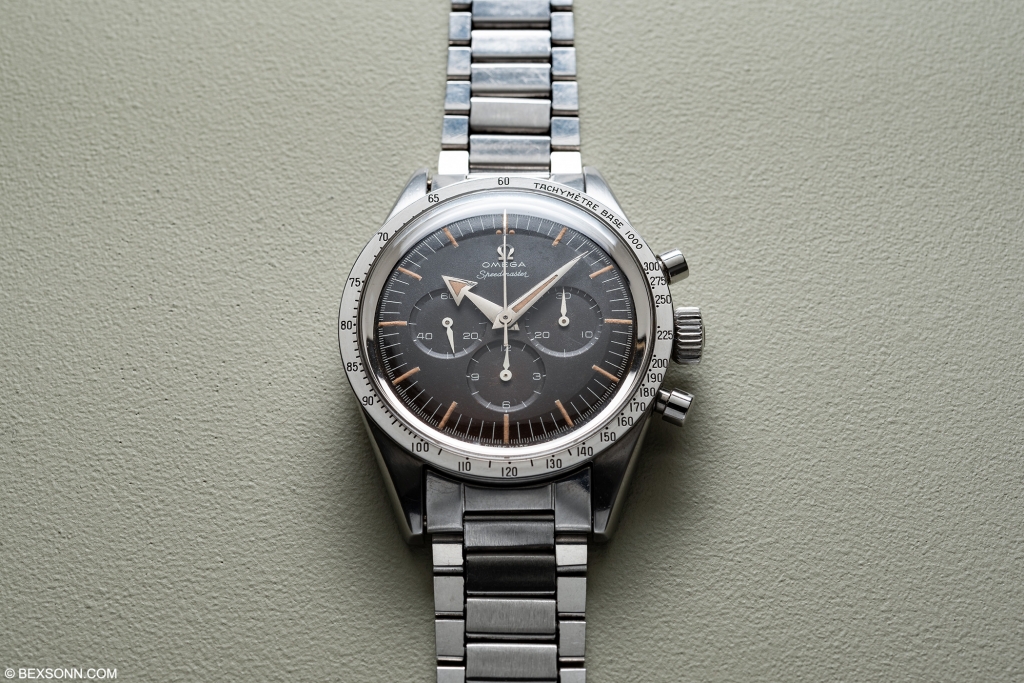 Phillips in Association with Bacs & Russo would at some point in the near future, have the opportunity to surpass this record and in doing so set a new one, and this is just what they did on the warm Saturday evening of the 12th of May. Lot 124: a perfect example of a rare Omega Speedmaster reference CK2915-1 was up for auction.
Phillips in Association with Bacs & Russo would at some point in the near future, have the opportunity to surpass this record and in doing so set a new one, and this is just what they did on the warm Saturday evening of the 12th of May. Lot 124: a perfect example of a rare Omega Speedmaster reference CK2915-1 was up for auction.
As you’ve probably heard me say before, the CK2915-1 herald a few things in the world of wristwatch chronographs but perhaps the most visible was the tach-o-metre being placed on the bezel. Omega were the first watch manufacturer to ever do this, all the way back in 1957, on a wristwatch and other brands soon followed suit.
This -1 example is a Speedmaster collectors dream of owning and had been preserved in excellent condition: the dial was practically flawless and had aged to a dark chocolate hue, the luminous material was also evenly aged to an outstandingly attractive intense tobacco colour. According to the Archives of Omega, it was sold in Costa Rica on December 17, 1958. This would suggest it was a mid-1958 production, which made perfect sense, considering some of its traits. The caseback was still blank without Seahorse engraving, making it possibly one of the very last examples made with this caseback. The bezel also bore traits of a late example, featuring a Mark II version, with rounded 3 instead of flat one. This -1 had all the right ingredients of a record-breaker. Within minutes of this going under the hammer, one bidder had already set a new world record bid for -1 at auction of CHF 250,000, however, this was swiftly beaten and didn’t stop until it reached CHF 330,000 (by a room bidder), dwarfing the previous record before fees, setting a record of 408,500 Swiss Francs after fees.
FINAL THOUGHTS
Once again Phillips in association with Bacs & Russo have done well, in fact to the total sum of 22,184,500 & 23,015,250 Swiss Francs from the Daytona Ultimatum & Geneva Watch Auction: SEVEN. However, there were a handful of lots that were passed but no one is perfect, including Phillips. That said, there were a few lots that perhaps underperformed but there were a good few that surpassed expectations – such as the surprising bidding, over “Elvis Presley’s Omega Wristwatch, Retailed by Tiffany & Co. a piece gifted to the him by RCA Records in 1961 to Commemorate the Sale of 75 Million Records sold for CHF 1,812,500 setting a new world record for the highest result ever achieved for an Omega timepiece sold at auction. But more interestingly, its new home will be the Omega Museum. This lot was perhaps the biggest shock over the entire weekend in our humble opinion.
Nonetheless, I think this auction was evidence, yet again, that the vintage watch market is not only alive and thriving, but certain buyers are now being priced out – turning to alternative timepieces more within their grasp, which are admittedly also doing well. However, as I’ve mentioned in the past, one must remember that these new prices achieved cannot be used as a realistic benchmark but more as an indicator of where the market is headed.
For the entire list of the Phillips Watches Geneva Auction: SEVEN & thematic Daytona Ultimatum results, visit the Phillips website.
